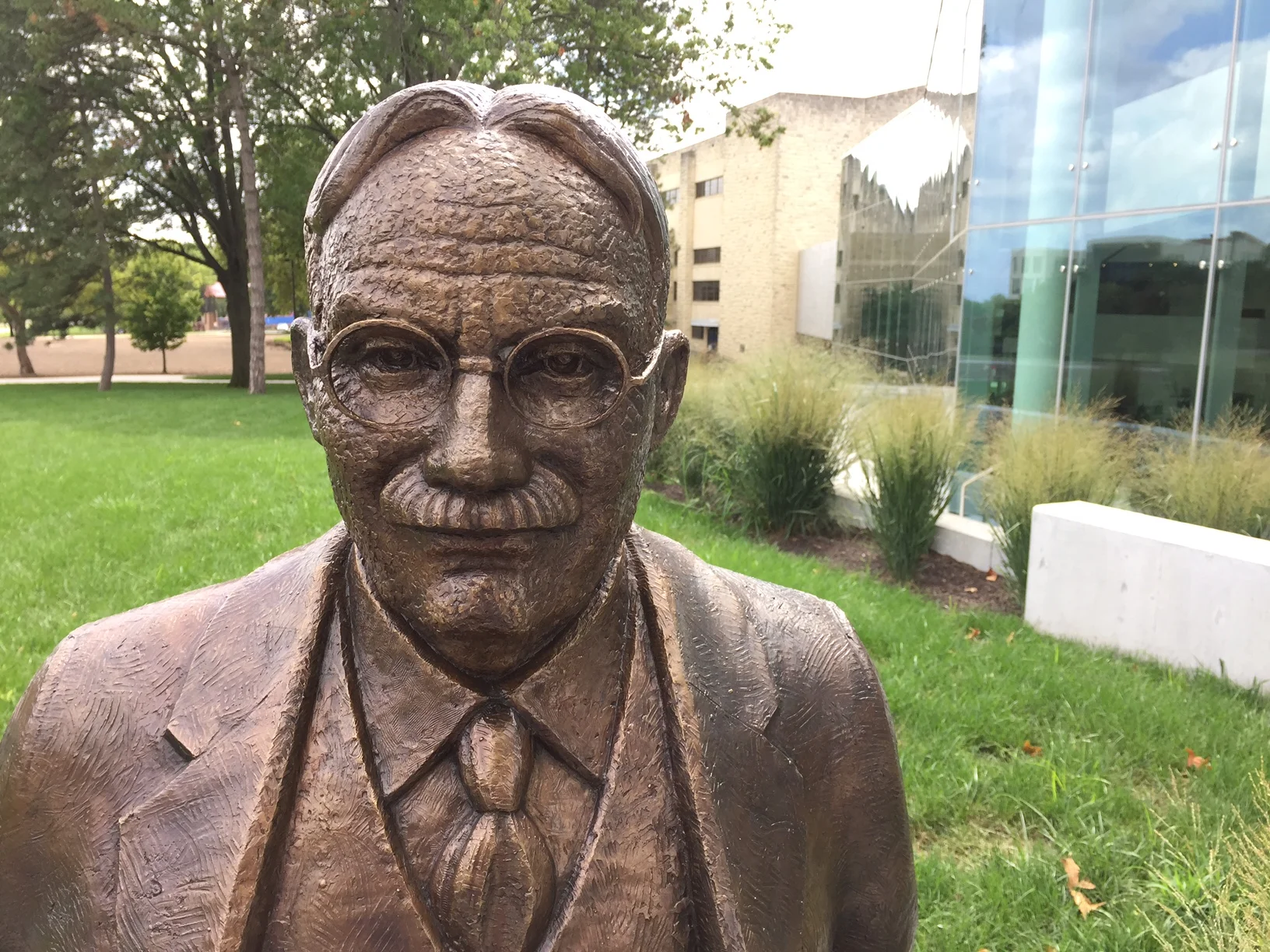By: Sam Zeff and Matt Hodapp
Sam Zeff
We take it as a matter of fact now that sports are big business. Professional sports are a huge business, but almost all the rest are at at least big. College coaches make millions of dollars for coaching and millions more for shoe endorsements, TV, and camps. But it wasn’t always this way. We were reminded of that by a recently discovered radio broadcast from New Year’s Eve, 1939 on WOR.
Gabriel Heatter introduced “We the People”, a regular Sunday night broadcast. Heatter loved uplifting stories, especially about dogs, but on this night we’d hear from the man who today has a street, a dorm, and a basketball court named after him.
Dr. James Naismith talked about the first basketball game in Springfield, Mass in 1891. He had two peach baskets nailed to the wall, an old soccer ball, and instructions to find some indoor activity for a bunch of young men couped up by “a real New England blizzard.”
"The boys began tackling, kicking, and punching," Naismith said. "They ended up in a free-for-all in the middle of the gym floor. Before I could pull them apart, one boy was knocked out, several of them had black eyes, and one had a dislocated shoulder. It was certainly murder,” Naismith said on the broadcast.
Kansas Historical Society
"Well, after that first match, I was afraid they'd kill each other. But they kept nagging me to let them play again. So I made up some more rules. The most important one was there was to be no running with the ball. That stopped the tackling and slugging. We tried out the game with those rules and we didn't have one casualty. We had a fine, clean sport."
Two pages of typed rules would later lead to a globle, multi-billion dollar sport. But Naismith had issues with the game he invented, some of the same issues we have today.
Naismith was born in Ontario in 1861. His parents immigrated to Canada from Scotland. He went to school at McGill University in Montreal where he played rugby, lacrosse, and soccer. But he excelled in gymnastics. He’d go on to get a BA in physical education, and later go on to become an ordained minister, and a medical doctor.
Naismith arrived at the University of Kanas in 1898. At a time when the world celebrated Renaissance men, James Naismith more than fit the bill. Now, though, we celebrate him for the invention of basketball, a game that is global and growing. But unlike any other sport in America, there is a founding document and a founding father.
The college game is faster now, and not segregated as it was then. But when you read the rules, Naismith would certainly recognize the game he invented back in Springfield, Mass. Recognize it, but he just might loath what it has become.
The rules sold for $4.3 million at auction. The DeBruce Center where the rules are housed cost $21.7 million. All the money was privately raised.
The center is attached to Allen Fieldhouse, arguably one of the most valuable venues in college sports.
Naismith didn’t address the commercialization in that 1939 broadcast, but he had his worries many years before.
Here’s part of what he had to say in the May, 1911 edition of the Graduate Magazine of the University of Kansas in a piece titled Commercialism in Sports.
“By commercialism is meant the paying of those who take part in athletics of any kind, either in money or in rewards which have a money value...” the subject, he goes on to say, “is not an easy one to handle for it is far from being settled.”
Kansas Historical Society
And then Naismith says this: "There is not a governing body of athletics today but would be glad of information leading to a solution of the problem in such a way as to advance the interests of the athletes and the sports.”
Sound familiar? We talk about these issues today.
Should we now pay college athletes as well as provide them scholarships? Do athletics add to the mission of a college? Is a hundred dollars a ticket a little too much for a college sporting event?
Naismith recognized that people could make a living playing sports. He mentions baseball as being far more a pro sport than an amateur one in 1911, and he talks about other positives things.
But here’s how he wraps up:
“The college student is the hero of the high-school boy. It is the duty of every student to align himself with the highest and most advanced ideals of sport as well as everything else...”
Our theme music is used in this episode is Shy Touches by Nameless Dancers. Other music used in this episode is Begrudge and City Limits by Blue Dot Sessions; both have been edited.






